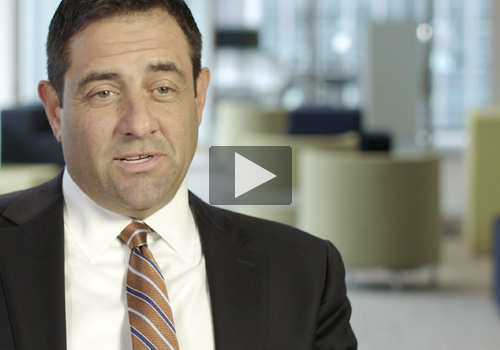The term orphan drugs first passed into wide use with the 1983 Orphan Drug Act. The Act aimed to focus the attention of drug manufacturers on diseases and conditions with very few patients, sometimes only a few thousand people.1
A small patient pool means small sales. At that time, the economic realities of such small patient populations meant that drug makers could not expect to recoup their investment to develop a new drug. And so, they didn’t: Fewer than 10 orphan disease products came to market between 1973 and 1983, when supported just by industry investment.1
The Orphan Drug Act introduced new tax breaks and other economic incentives designed to make these niche markets more attractive to drug makers. Seen strictly in this respect, the Act must be described as a brilliant success story.
In the years since the Orphan Drug Act was made law, approximately 4,000 drugs have received the orphan designation (making them eligible for the incentives), while over 600 have received U.S. Food and Drug Administration (FDA) approval and are for sale.1 In fact, orphan drugs now make up 17% of total worldwide Rx sales today.2
Good news for patients – at a cost
We never want to lose sight of the fact that these new drugs represent a fantastic improvement for the people who use them. Up to 30 million people in the U.S. are affected by a rare disease – more than half of them children. Many of these diseases are life-threatening.3
Previously, many of these conditions could only be managed as chronic conditions. The new breed of dedicated orphan drugs is different. For the first time there are treatments that hold the prospect of a much better quality of life to some patients.3
While this is good news for the people who now have treatments for conditions that the drug industry previously ignored, it has come at a tremendous cost. These therapies can cost up to $750,000 per year, with even the average annual cost per member now at approximately $147,000 – more than four times the mean cost for non-orphan drugs.2, 4
This graph illustrates the huge pricing leverage that comes into play as the number of potential patients shrinks. All of the orphan drugs that cost $100,000 or more are for fewer than 50,000 patients:
Citations: Quintiles IMS Institute, Sep 2017
What to do about spending growth?
Sales for orphan drugs are projected to continue to rise faster than other drugs. Sales are expected to climb by 11% per year through 2024, compared with 6.4% growth for the overall pharmaceutical market over the same period.2 And this momentum looks to be sustained by new drugs now in development. Orphan drug sales may account for over one third of all of the drugs currently in the R&D pipeline by 2024.2
As recently as ten years ago, payers did not ordinarily use management approaches specifically designed for orphan drugs.5 While unit costs for orphans were high, there simply weren’t that many of them. So payers relied on the same management strategies used to control the costs of biologics, injectibles, or other specialty drug products.5
But as the scale of orphan drug use continues to grow, this business-as-usual attitude is looking out of date. Not only are orphan drugs and patients in treatment increasing in number, there are growing safety concerns as orphan drugs are often fast-tracked to market with as few as one controlled trial, and limited long-term safety data.6, 7
Now payers are increasingly concerned. In a recent survey by the Pharmacy Benefit Management Institute (PBMI), 71% reported they believe that current prices are unsustainable.2
But specific tools to effectively manage these costs have been lacking. In response to this clear and pressing need, we have developed the OptumRx Orphan Drug program.
This program is designed to help clients achieve optimal value for orphan drug therapies – without blanket exclusions. Instead, we deliver value by investing in clinical expertise to optimize care and reduce drug spend.
We evaluated over 2,000 FDA-approved orphan drugs. We were looking for ultra-high cost medications ($50,000+ per year) that are used for chronic conditions, and that are mostly self-managed at home.
These drugs offer multiple opportunities for a trained pharmacist to optimize care. The drugs we’ve chosen tend to be difficult to tolerate, and feature complicated dosing and significant adverse events. Our specially trained pharmacists create a uniquely tailored care experience for members, with advanced clinical counseling to address their personalized medication needs.
Through this targeted approach we can help clients make a significant impact on the quality of care their members receive, as well as its overall cost. Please turn to the OptumRx Orphan Drug Program PDF for a full description of the features and benefits of this innovative new service.
Related content
References
- U.S. Food and Drug Administration. Developing Products for Rare Diseases & Conditions. Last Updated: October 5, 2018. Accessed January 28, 2019.
- EvaluatePharma® Orphan Drug Report May, 2018. Accessed January 28, 2019.
- IQVIA Institute. Orphan Drugs in the United States: Growth Trends in Rare Disease Treatments. Published October, 2018. Accessed on February 6, 2019.
- Managed Care. Orphan drugs: Way too many, way too expensive. Published June 4, 2017. Accessed January 28, 2019.
- American Health & Drug Benefits. Orphan Drug Pricing and Payer Management in the United States: Are We Approaching the Tipping Point? Jan/Feb 2010, Vol 3, No 1 – Regulatory. Accessed January 28, 2019.
- The Scientist. How Orphan Drugs Became a Highly Profitable Industry. Published May 1, 2018. Accessed January 28, 2019.
- The BMJ. Postapproval studies of drugs initially approved by the FDA on the basis of limited evidence: systematic review. Published May 3, 2017. Accessed February 6, 2019.
STATEMENT REGARDING FINANCIAL INFLUENCE:
This article is directed solely to its intended audience about important developments affecting the pharmacy benefits business. It is not intended to promote the use of any drug mentioned in the article and neither the author nor OptumRx has accepted any form of compensation for the preparation or distribution of this article.



